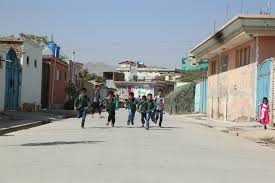How can the increasing urbanization in Afghanistan be better managed?

Managing the increasing growth of urbanization in Afghanistan requires a comprehensive and multidimensional approach that pays attention to various economic, social, infrastructural, and environmental issues. Increasing urbanization can bring serious challenges such as increasing urban poverty, overcrowding, unemployment, lack of sufficient infrastructure, and environmental issues. To better manage this situation, the following measures can be effective:
-
Urban infrastructure development
The rapid growth of urbanization requires the improvement and development of infrastructure such as transportation, water and sewage, electricity, and health services. To better manage this growth, the government and the private sector must invest enough in these sectors so that cities can meet the needs of the growing population. -
Strengthening urban planning
One of the big problems in many Afghan cities is the lack of effective urban planning. For better management of urbanization, comprehensive urban plans should be prepared and implemented in which sustainable development, appropriate distribution of services and facilities, and environmental protection are considered. It is also necessary to establish stricter laws to prevent unauthorized expansion of buildings and residential areas.

-
focusing on the development of rural areas
Many urban migrations occur due to the lack of economic and social opportunities in rural areas. To reduce the pressure on cities and control urbanization, more investment should be made in rural areas in infrastructure, economy, and education. Creating jobs, providing health and educational services in rural areas can help reduce rural-urban migrations. -
Development of affordable housing
One of the major problems of rapid urbanization is lack of housing and rising prices. Developing affordable housing projects and creating support plans for low-income groups can help prevent the increase in marginalization and improve living conditions in cities. -
Strengthening the urban economy
The growth of urbanization without strengthening the urban economy can lead to an increase in unemployment and poverty. Developing small and medium industries, attracting foreign investments, and strengthening service sectors such as tourism and information technology can help create job opportunities and sustainable economic growth in cities. -
attention to the urban environment
One of the main challenges in big cities is environmental pollution and reduction of green space. For a better management of urbanization, attention should be paid to the preservation and expansion of urban green space, waste management, and air and water pollution control. Environmental projects such as the development of parks and green spaces can help improve the quality of urban life. -
Improving public transportation
Efficient public transportation system is one of the important components of urbanization management. The increase in urban population requires the development of public transportation systems such as buses, metro, and rail transportation systems to prevent traffic congestion and improve access to different parts of the city. -
Strengthening social and educational services
As the urban population increases, the need for social services such as health, education, and welfare services also increases. The government and non-governmental organizations should invest in the provision of these services so that the needs of citizens are answered in a timely and effective manner. -
Community participation in urban management
Urbanization management should not only be in the hands of governments and official institutions. Active participation of the community, including non-governmental organizations and local groups, in decision-making and urban management processes can help improve the quality of services and infrastructure. -
Creating reasonable immigration policies
Creating policies that control and manage internal migration can help reduce the pressure on big cities. These policies should be in such a way that immigrants are directed to smaller cities or less developed areas, while at the same time strengthening economic opportunities in these areas.
Conclusion
Increasing urbanization in Afghanistan is a big challenge, but with careful planning and effective management, this process can be guided in a way that leads to sustainable development and improving the quality of urban life. Investing in infrastructure, developing rural areas, improving the public transportation system, and paying attention to environmental issues are among the measures that can help manage urbanization growth better.
